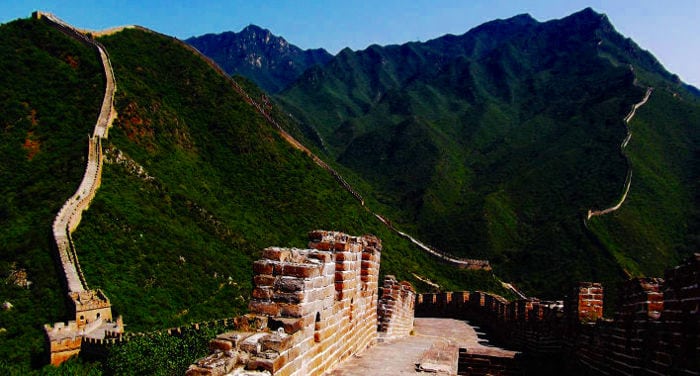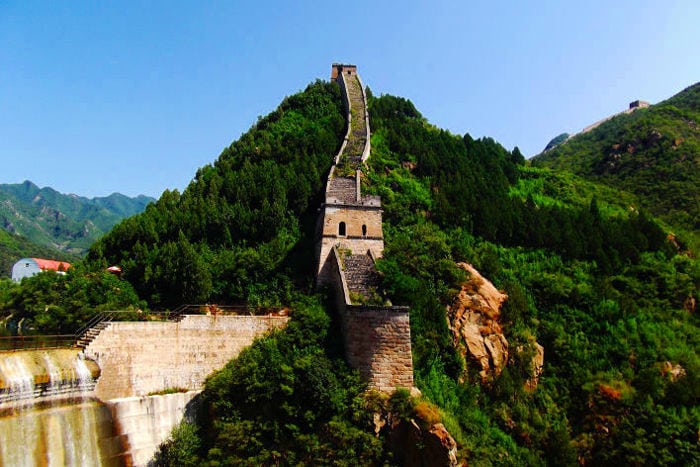
The Great Wall of China is one of the most recommendable places to visit and is without a doubt the must-see tourist attraction when you travel to China. However, the question that many people ask is which part of the Wall should they visit?
The Badalin, Mutianyu and Juyongguan sections are the most well-known sections, as they are the easiest to access and therefore the most crowded.
In this article, I am going to talk about another section, HuangHua Cheng (黄花城, literally “The Wall of the Yellow Flowers“), which is much less known, and a place worth visiting.
The HuangHua section is an extension of 11 km built during the Ming Dynasty (1368-1644) and which is located at around 60 km from Beijing, in the Huairou district.
Why do I recommend this section?
- It is not one of the most touristic sections: Because of this, you are going to be able to enjoy the Great Wall in all of its splendor, without having to share it with thousands of other tourists.
- It is one of the closest sections to Beijing: Wild sections of the great wall such as Gubeikou offer spectacular scenery, but they are very far away from Beijing. If you don’t have a lot of time and you don’t want to spend the whole day traveling, HuangHua Cheng is a good option. Here you find our suggestions for booking an hotel in Beijing.
- This section is partially restored, offering a contrast between the wild Wall and the safe one (in Gubeikou you need to be way more careful about where you step or you risk falling down the mountainside).
- It is located on the shores of an artificial lake: The section crosses the Huaijiu river (怀九河), precisely at the point where a dam has been built, creating an artificial lake. The combination of the lake with the Wall offers extremely beautiful scenery which is not easy to find in other sections.

How to get there
By bus
Without a doubt, the cheapest way to get to HuangHua is on public transit. Below, I describe step by step how to arrive and the cost:
- Take the subway and get off at the Dongzhimen (东直门) stop on line 2 or line 13: 2 Yuan.
- Walk to the Dongzhimen Public Transport Hub through the underground connection with the subway stop.
- Take the express bus 916 (916 快) in the direction of Huairou bus station (怀柔汽车站). The bus runs from 6:50 a.m. to 7:30 p.m. heading there and from 5:00 a.m. to 5:30 p.m. on the way back; it leaves every 20 minutes and costs 12 Yuan.
- Get off at the stop called Nanhua Yuan Sanqu ( 南华园三区), in the Huairou district (around 62 km later, which takes around 50 minutes).
- At the stop, walk 100 meters in the direction of the traffic light until getting to the bus stop called Huairou Dishui Zhan (怀柔地税站), which is located on your right in front of public washrooms and the Huairou Local Tax Bureau building.
- Take the Huairou-Water Great Wall bus line (怀柔—水长城). The bus runs every 20-30 minutes from 5:35 a.m. until 6:20 p.m. going there and from 6:10 a.m. to 7:05 p.m. on the way back and costs around 3-4 Yuan.
- Get off at the last stop, which is called Shui Changcheng (水长城) or Water Great Wall (35 kilometers, approximately one hour).
Easy as pie, right?
By private transportation
This is obviously the fastest and more convenient way to get there (it will take you approximately an hour and a half). If you are traveling with other people, it may be a good alternative.
The price should be around 600 Yuan either in a taxi or a minivan. To obtain this service, you can talk to the reception of the hotel or hostel where you are staying, and they will normally book it for you.

How much does the entrance cost?
The entrance fee used to cost 34 Yuan, but in 2010, the section was officially closed to the public. This doesn’t mean that you can’t access it; we’re talking about China here!
The local peasants have opened a few routes via which the wall can be accessed, and for this service, they charge a small commission of around 3 Yuan (the man sitting in the shade).
Some suggestions
During the walk from Huairou to HuangHua you will see a lot of restaurants. If you like fish, I strongly recommend that you find the time to eat a barbecued fish (烤鱼, kaoyu), as they are delicious.
In addition, many restaurants serve vegetables from the local farmers which are really tasty. The only problem is that you will find that the menus are only in Chinese and probably won’t have photos, so if you don’t speak Chinese, I suggest you bring a dictionary, a traveler’s phrase book or test your luck!
As this section is relatively close to Beijing, it has similar “climactic” conditions. If there is little visibility in Beijing, it is likely that it will be the same for the Wall. If you have the choice, choose a clear day (your photos will thank you).
As I have said, the Wall is partially restored and officially closed to the public, because of which it isn’t easy to access. In addition, in the non-restored part, it is possible that rocks may come loose. Because of this, you should take certain precautions and wear good shoes. However, this remains a section that isn’t particularly demanding, and in summer, I have climbed the wall in flip-flops (don’t do it!) and I’m still alive. ;)
Good luck and enjoy this unique experience!
Photo Credits: Photos by Sapore di Cina



